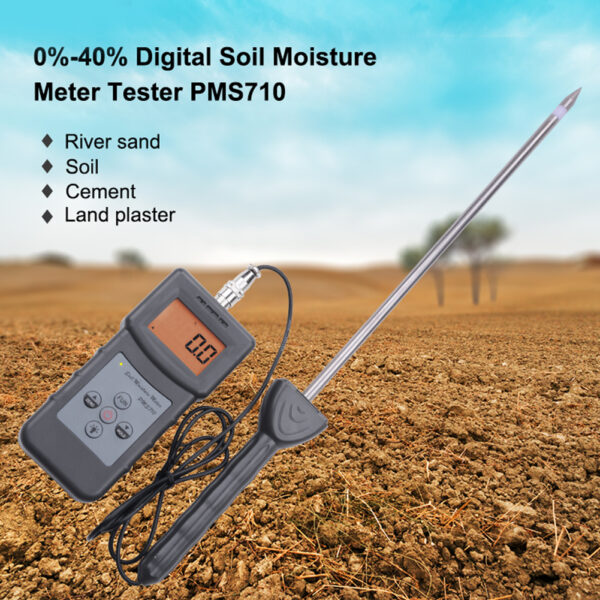Comprehending the Importance of a Moisture Meter in Preventing Mold and Water Damages in your house
In the realm of home maintenance, the presence of wetness can often be a silent yet formidable foe, capable of triggering pervasive mold growth and perilous water damage if left unattended. Comprehending the significance of a dampness meter in this fight is not merely a choice yet a critical need.
Relevance of Moisture Discovery
Effective wetness discovery methods are critical for protecting residential properties and preventing possible mold and mildew growth and water damages. Moisture can permeate right into numerous structure materials, causing structural issues and carcinogen. By utilizing a moisture meter, home proprietors can proactively recognize areas vulnerable to excess dampness, permitting for prompt intervention and reduction methods.
Moisture meters provide accurate readings of moisture degrees in various products such as wood, drywall, and concrete. This information assists in identifying areas of worry, even in covert or hard-to-reach areas. Early detection of moisture buildup enables prompt repair services or modifications to stop more damages.

Just How Moisture Meters Job
Wetness meters play a crucial function in the positive recognition of excess dampness, assisting in the prevention of potential mold and mildew growth and water damages by offering precise readings of dampness degrees in various structure products. Some progressed dampness meters pin both incorporate and pinless modern technologies for thorough wetness discovery. Understanding just how moisture meters feature is important for exact and timely wetness level analyses, allowing efficient preventative actions versus mold and mildew and water damages.
Detecting Early Indication
Upon preliminary inspection of a property, identifying refined indicators of excess wetness ends up being essential in the very early discovery of prospective mold and mildew growth and water damage. Some typical early caution indications consist of moldy smells, water discolorations on ceilings or walls, peeling off paint or wallpaper, and distorted or discolored surfaces. Mildewy smells usually show the presence of mold and mildew or mildew, even if no noticeable signs appear. Water discolorations can signify leakages or seepage, while peeling off paint or wallpaper might be an outcome of moisture compromising the bond of these materials to the surface area. Distorted or tarnished surface areas, such as buckling floorboards or discolored drywall, are clear signs of water damage. Additionally, a boost in allergic reaction symptoms or respiratory system concerns amongst passengers might suggest the presence of mold and mildew due to excess dampness. By quickly recognizing and addressing these very early caution signs, property owners can minimize the danger of comprehensive mold and mildew growth and water damages in their properties.
Avoiding Mold And Mildew Development
Identifying early indication of excess wetness within a residential property not just enables timely detection of possible mold and mildew development and water damages yet additionally works as a proactive action in protecting against the proliferation of mold. To efficiently avoid mold development, it is critical to resolve any sources of dampness quickly. This can consist of taking care of leakages in roof coverings, home windows, or pipelines, guaranteeing appropriate air flow in damp areas like restrooms and kitchen areas, and using dehumidifiers in high-humidity areas. Frequently examining and original site maintaining the building's pipes, roof, and rain gutters can additionally assist in preventing water intrusion that can bring about mold growth.
Keeping an eye on moisture levels in areas vulnerable to moisture, such as basements and crawl visit homepage areas, utilizing a moisture meter can additionally help in very early detection of elevated dampness degrees and possible mold growth - Moisture Meter. By taking positive measures to protect against excess wetness and mold development, homeowners can secure their building and interior air top quality.
Benefits of Normal Monitoring
Normal tracking of moisture degrees in a home can play an important role in maintaining a healthy indoor setting and protecting against possible mold and water damage. By regularly examining wetness levels, home owners can discover any problems immediately and take essential actions to prevent mold and mildew growth and water damages.
Furthermore, routine surveillance permits property owners to track patterns and trends in moisture levels in time. By establishing a standard and surveillance adjustments, individuals can recognize any kind of locations of worry or potential vulnerabilities in the property's structure. This data-driven approach makes it possible for targeted treatments and maintenance efforts to attend to underlying issues prior to they intensify right into more significant problems. Eventually, the regular monitoring of dampness degrees equips property owners to safeguard their building, protect their health, and preserve the honesty of their interior setting.

Verdict

By click over here using a dampness meter, building proprietors can proactively determine locations susceptible to excess wetness, allowing for prompt treatment and reduction techniques.

Checking wetness degrees in areas vulnerable to dampness, such as basements and creep spaces, making use of a wetness meter can likewise assist in early discovery of raised moisture degrees and potential mold and mildew development. (Moisture Meter)